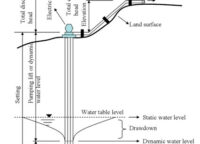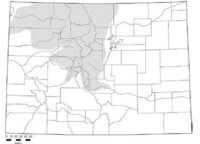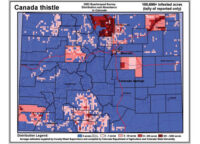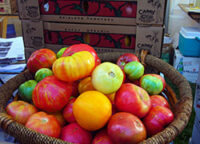- 09, 08, 2015
- No Comments.
- By
Irrigation Scheduling – 4.708
Print this fact sheet by I. Broner (2/05) Quick Facts… Irrigation scheduling is the decision of when and how much water to apply to a field. Its purpose is to maximize irrigation efficiencies by applying the exact amount of water needed to replenish the soil moisture to the desired level. Irrigation scheduling saves water and […]
Take a Tour- 09, 08, 2015
- No Comments.
- By
Irrigation Pumping Plant Efficiency – 4.712
Print this fact sheet by J.L. Chávez, D. Reich, J.C. Loftis, and D.L. Miles *(9/11) Quick Facts… Most irrigation pumping plants have excessive operating costs because they are often in need of repair, poorly matched to the pumping load, or incorrectly plumbed using more power or fuel than they should. Pumping plant performance can be […]
Take a Tour- 09, 08, 2015
- No Comments.
- By
Glossary of Water Terminology – 4.717
Print this fact sheet by R. Waskom and M. Neibauer (5/12) Quick Facts…. Water in Colorado is administered under the doctrine of prior appropriation or “first in time, first in right doctrine”. The state constitution declares that “the right to divert the unappropriated waters of any natural stream to beneficial uses shall never be denied.” […]
Take a Tour- 09, 08, 2015
- No Comments.
- By
Fusarium Wilt & Yellows of Sugar Beet & Dry Bean – 2.950
Print this fact sheet by H.F. Schwartz, L.W. Panella, M.A. Brick, and P.F. Byrne* (3/13) Quick Facts… Sugar beets are an important cash crop in northeastern Colorado with approximately 30,000 acres planted and 944,000 tons harvested in 2012. Fusarium yellows, also known as Fusarium wilt, is a fungal disease (caused by Fusarium oxysporum Schlechtend.:Fr.) with […]
Take a Tour- 08, 12, 2015
- No Comments.
- By
Bacterial Diseases of Beans – 2.913
Print this fact sheet by H.F. Schwartz *(5/11) Quick Facts… Halo blight and bacterial brown spot are favored by cool to moderate temperatures, high moisture and plant wounds before flowering. Common bacterial blight and bacterial wilt are favored by moderate to warm temperatures, high moisture and plant wounds during and after flowering. The pathogens can […]
Take a Tour- 08, 06, 2015
- No Comments.
- By admin
Managing Wyoming ground squirrels – 6.505
Print this fact sheet by W.F. Andelt, S.N. Hopper* (3/16) Reviewed by Sharon Bokan** Quick Facts… The Wyoming ground squirrel is one of six species of ground squirrels found in Colorado. Wyoming ground squirrels compete with livestock for forage and can destroy food crops. Wyoming ground squirrel burrowing can damage hay fields, grasslands, golf courses, […]
Take a Tour- 08, 04, 2015
- No Comments.
- By admin
Irrigation Ditches and their Operation – 6.701
Print this fact sheet by R. Waskom, E. Marx, D. Wolfe and G. Wallace* (12/14) Quick Facts… Water rights in Colorado are considered a private property right. Water rights can be sold or inherited, and prices may vary according to supply and demand. Ditch companies coordinate the use, ensure proper maintenance and efficient operation of […]
Take a Tour- 08, 04, 2015
- No Comments.
- By admin
Musk Thistle – 3.102
Print this fact sheet by K.G. Beck * (11/13) Quick Facts… Musk thistle is a biennial weed that reproduces only from seed. The key to successful musk thistle control is to prevent seed production. Apply herbicides such as Tordon, Milestone, Transline, Perspective, Vanquish/Clarity or 2,4-D to musk thistle rosettes in spring or fall. Apply Escort […]
Take a Tour- 08, 03, 2015
- No Comments.
- By admin
Canada Thistle – 3.108
Print this fact sheet Canada Thistle by K.G. Beck * (Revised 11/13) Quick Facts… Canada thistle is a creeping perennial that reproduces from vegetative buds in its root system and from seed. It is difficult to control because its extensive root system allows it to recover from control attempts. Combining control methods is the best […]
Take a Tour- 08, 03, 2015
- No Comments.
- By admin
Nostalgia in the Garden
Charleen Barr Colorado State University Extension Master Gardener in Larimer County May 30, 2015 Planting seeds has been a human activity for thousands of years. Seed was saved and replanted again the following year. Over several generations, plants were selected for certain traits. Our edible broccoli, for example, became different from the tough, wild plants […]
Take a Tour










